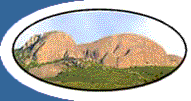THERE is nothing more unsettling than lurching into a pothole that has mysteriously appeared out of nowhere in an otherwise perfectly sound tarred road surface.
Centuries ago there were of course no roads through the valley. Migrating antelope, zebra and elephants created tracks. Pastoralists herded their cattle and sheep along the same tracks, and over time the tracks became paths and roads.
The need for proper roads increased once commercial farming took root.
Spare a thought for those early settlers trying to transport their grains and wine to Table Bay harbour: the journey from the Drakenstein Valley across the Cape Flats to the sea was an arduous one. For some of the more remote farmers in the valley, it took up to four days by ox wagon.
The larger wine producers would make the trip 50 times - just to get their wine to the market.
All this meant that in 1839 those transport costs amounted to a third of the market value of the wine crop.
The main reason for the reason for the slow progress was sandy Cape Flats.
Historians remind us that they needed between 18 to 20 oxen to pull those wagons loaded with barrels of wine across the Cape Flats, and even then it would not expect to travel more than one kilometre an hour.
In late summer the south-easter and shifting sand dunes would make the route impassable.
Authorities experimented with all types of vegetation to keep the sand off the road. They planted grasses, renosterbos, wild olives and even fined people for using the undergrowth for firewood, or allowing their animals to graze on it.
When all else failed they imported Australian myrtle, hakea and Port Jackson. The alien plants brought temporary relief, but had a disastrous long term impact on the indigenous vegetation.
In 1845 a major and hugely expensive civil engineering project was undertaken to improve the road. Embankments were built, and in places the road was raised by as much as five metres.
The new road was a vast improvement, and its success was measured by the fact that it was now possible to drive a buggy drawn by only two horses through the Cape Flats.
In the Drakenstein valley the authorities also tried to cope with a increasing need for better road surfaces.
Some of the earliest photographs of Paarl show wide deeply rutted roads with prominent ditches on either side. The town’s roads were muddy in winter, and covered in a fine powdery dust in summer.
Of course Paarl’s inhabitants complained about the dust, and in 1864 the municipality had a dedicated water cart to wet the roads and keep the dust under control.
In 1905 imposed speed restrictions - cars were not allowed to exceed a maximum speed of just under 13 km per hour. This was presumably to curb the dust and not to scare the oxen and horses, which of course explains why some people still adhere to that rule.
Gravel from the town’s granite quarries were later added to improve the road surface. One can only guess at the impact of those gravel surfaces on car and bicycle tyres.
It is interesting to note that off-cuts and smaller boulders were often used to make kerbstones, hence the many granite kerbstones in Paarl’s older streets.
In the Drakenstein Heemkring’s memory archive, people recall that draught oxen’s feet were fitted with leather “boots” to provide some protection against the hard granite surface. Another recalls sparks flying off the shoed hooves of horses.
In the early 1900s the road between Paarl and Cape Town was also untarred. It was not uncommon to stop as many as six times to fix punctures.
The proposed tollgate on the N1 reminds one that tollgates are nothing new. In the 1800s there were quite a few, although travellers were known to take detours through the open veld to avoid paying.
There were ‘tollgates’ outside Paarl on the road to Stikland, another near Kraaifontein, and at the Wellington Bridge.
Tolls were also collected on Bain’s Kloof Pass, Franschhoek Pass and earlier on the rudimentary track through Du Toit’s Kloof.
To cross the Lady Grey Bridge in central Paarl in 1858 you had to pay a penny for every wheel on your vehicle, and a penny for every draught horse or mule, and half a penny for every ox.
If you planned to herd animals across the bridge, it was a quarter penny for every sheep, goat and pig.
One can only wonder how the new road authorities are going to treat unattended cows grazing on the N1 highway.


